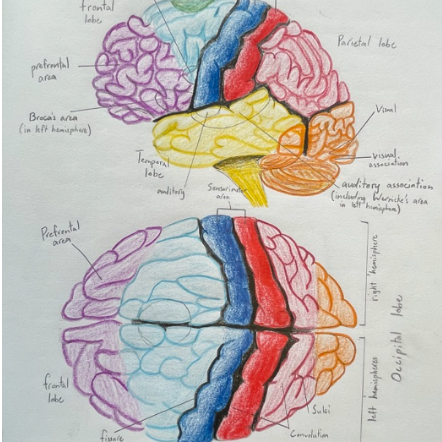Ambleside Schools International Articles

Browse more Ambleside Schools International Resources.
Deceptive Brain Messages
At any given moment, our amazing brains direct our reactions to life circumstances by integrating current experience with past experience and doing so along habitual lines. Our brains are organs of habit, responding according to established patterns of networked nerve cells. With a little self-reflection, it is easy to recognize that our brain responses are at times less-than-helpful and can even be quite destructive. In their book, You are Not Your Brain, Jeffrey Schwartz and Rebecca Gladding identify these brain responses as “deceptive brain messages.”
There are only a few true necessities in life, but for many of us, it doesn’t feel that way. A lifetime of habits, ingrained by repetition, can seemingly make us slaves to a not always beneficial master – our own brain. Nothing is more confusing, or painful than when your brain takes over your thoughts, attacks your self-worth, questions your abilities, overpowers you with cravings, or attempts to dictate your actions. Have you ever felt something is compelling you to “go” places, mentally or emotionally, where you don’t want to be? Do you find yourself acting in uncharacteristic ways or doing things you don’t want to be doing? The reason is simple: Deceptive brain messages have intruded into your psyche and taken over your life. Left to its own devices, your brain can cause you to believe things that are not true and to act in any number of self-destructive ways.
The brain thinks and reacts as it is accustomed to think and react. It is an organ of habit. When habits are destructive, we follow a line of reasoning justifying ourselves, alleviating responsibility for the desired outcome. As Charlotte Mason points out in Parents and Children, it is a particularly pernicious habit.
We get into the way of thinking such and such manner of thoughts, and of coming to such and such conclusions, ever further and further removed from the starting-point, but on the same lines. There is structural adaptation in the brain tissue to the manner of thoughts we think––a place and a way for them to run in.
Charlotte Mason recognized that both parents and teachers were far too often content to leave the children to their nature, to leave them to their deceptive brain messages and unhealthy behaviors. Any significant growth in virtue begins with the recognition of bad habits and their underlying deceptive brain messages (both conscious and unconscious). These prevailing messages are sown into lives through relationships, both in verbal and non-verbal ways.
Adults must ask themselves the following questions: What are the deceptive messages that hold ground in the lives of those in my care? Am I a voice that communicates deceptive brain messages verbally or non-verbally? What are the life-giving messages that I wish to communicate to my child or student? How do I challenge the deceptive messages and relationally manifest the life-giving messages?
We are always training in habit, whether habits of mind or body. Charlotte Mason gives us a potent reminder of how subtly these habits are formed:
Thus we see how the destiny of a life is shaped in the nursery, by the reverent naming of the Divine Name; by the light scoff at holy things; by the thought of duty the little child gets who is made to finish conscientiously his little task; by the hardness of heart that comes to the child who hears the faults or sorrows of others spoken of lightly.
Image: Illustration of the human brain by an Ambleside 8th grade student.



